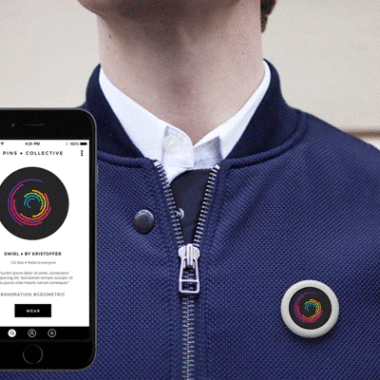
Living in the machine to hone IoT design skills
Part of a new MEX series highlighting compelling case studies which catch our eye. Follow MEX @mexfeed or by signing-up for the weekly email newsletter.
Alloy’s case study of internal efforts to improve internet of things (IoT) design skills is thorough and rich with insight. Their motivation was two-fold:
- Better understanding of IoT, a theme of emerging client demand
- Testing a theory about the need to live and breath their digital materials to refine their own processes
In their words: “To create products and services for an unknown future, we must experience them first-hand in order to understand them.”
The resulting case study, which mixes video, still images and a concise write-up, documents a journey in which they used their own team and design studio as an IoT laboratory to explore some deceptively simple challenges:
- Can I use a meeting room?
- Is someone free to talk?
- Do we have enough toilet roll?
The experiments they conducted around each theme led to some high-level principles which should help guide others exploring this area. My favourites were:
- By using multiple datasets, we were able to make some useful judgments or inferences. For example we could link the level of noise with motion sensors to control lighting in a room more effectively.
- A physical display or device attracts more attention than a screen – there is a theatre to its’ activities that draws peoples’ attention…but neither digital nor physical displays by themselves provide the right information at the right time, in the right way. Collectively both touch-points offer a platform to better express information.
These reflect some of the broader range of principles we’ve uncovered over the years in various MEX experiments, such as our work on proximity, multi-touchpoint and robot experiences.
To my mind, the way in which Alloy initiated, structured and documented the case study also highlights two important lessons for agencies:
- There is value to speculative experimentation not directly linked to client work
- There is insight to be gathered from your own team’s behaviours
The second point may seem to run counter to the principles of user-led design work, but anyone working in this area day-to-day will know how much additional cost and complexity can come from recruiting an external panel of ‘average users’. If you insist on this, it can often sink these kind of projects before they see the light of day.
Instead, I favour the kind of approach adopted by Alloy, where they took a more nuanced view of the goals they were trying to achieve and realised that, for this specific purpose, the behaviours of their own team would provide sufficient user insight. Furthermore, the results of the case study support the view that these ‘expert users’ have a unique value of their own which outweighs biases they may bring with them. It would have been a different story if this were intended to create a mass market consumer product, but that was not the goal here.
The full Alloy case study is a useful resource and contribution to the community well worth studying in detail.
Part of a new MEX series highlighting compelling case studies which catch our eye. Follow MEX @mexfeed or by signing-up for the weekly email newsletter.
For further exploration
- Alloy’s original case study
- MEX principles for proximity, multi-touchpoint and robot experiences
- In the mists of time (well, 2004 actually), Alloy and PMN (the consulting organisation behind MEX) collaborated to develop four experienced-led concept phones (PDF). These included a full-touchscreen, music-focused smartphone some three years before the iPhone – a little ahead of its time, perhaps! We launched them at the World Handset Forum in San Diego in December 2004, going on to be covered by Wired Magazine and other leading media channels.



+ There are no comments
Add yours